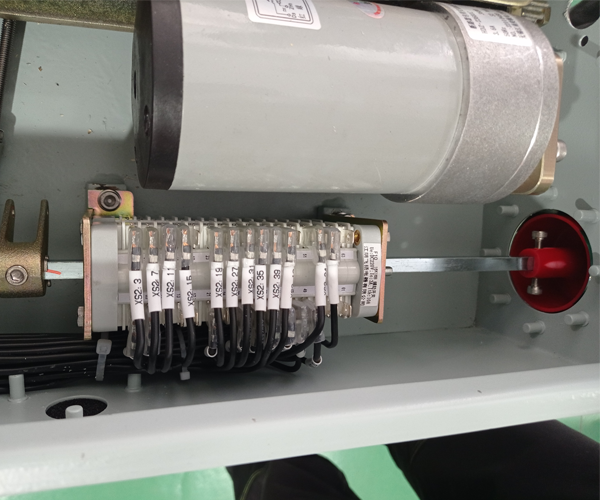

The function and operation mode of the auxiliary switch on the circuit breaker switch
Release time:2023-11-02
A circuit breaker refers to a switching device that can close, carry, and break current under normal circuit conditions and can close, carry, and break current under abnormal circuit conditions within a specified time. Circuit breakers are divided into high-voltage circuit breakers and low-voltage circuit breakers according to their application range. The boundary between high and low voltage is relatively vague. Generally, those above 3kV are called high-voltage electrical appliances.
Circuit breakers can be used to distribute electric energy, start asynchronous motors infrequently, and protect power lines and motors. They can automatically cut off the circuit when serious overloads, short circuits, undervoltage and other faults occur. Its function is equivalent to a fuse switch. Combination with overheating and underheating relays, etc. Moreover, there is generally no need to change parts after breaking the fault current. At present, it has been widely used.

In the generation, transmission and use of electricity, power distribution is an extremely important link. The power distribution system includes transformers and various high and low voltage electrical equipment. The low voltage circuit breaker is a widely used electrical appliance.

The auxiliary switch is part of the main switch and is configured in high-voltage or medium-voltage circuit breakers, isolating switches and other power equipment to serve as the opening, closing, signal control and interlocking protection functions of the secondary control circuit. It can also be used as a combination switch and Use a transfer switch. The reason why the auxiliary switch has the word "auxiliary" in its name is because it is not an independent switch. It is a carrier for auxiliary breaking, making and interlocking functions in the control system.
Circuit breakers can be used to distribute electric energy, start asynchronous motors infrequently, and protect power lines and motors. They can automatically cut off the circuit when serious overloads, short circuits, undervoltage and other faults occur. Its function is equivalent to a fuse switch. Combination with overheating and underheating relays, etc. Moreover, there is generally no need to change parts after breaking the fault current. At present, it has been widely used.

In the generation, transmission and use of electricity, power distribution is an extremely important link. The power distribution system includes transformers and various high and low voltage electrical equipment. The low voltage circuit breaker is a widely used electrical appliance.

The auxiliary switch is part of the main switch and is configured in high-voltage or medium-voltage circuit breakers, isolating switches and other power equipment to serve as the opening, closing, signal control and interlocking protection functions of the secondary control circuit. It can also be used as a combination switch and Use a transfer switch. The reason why the auxiliary switch has the word "auxiliary" in its name is because it is not an independent switch. It is a carrier for auxiliary breaking, making and interlocking functions in the control system.
